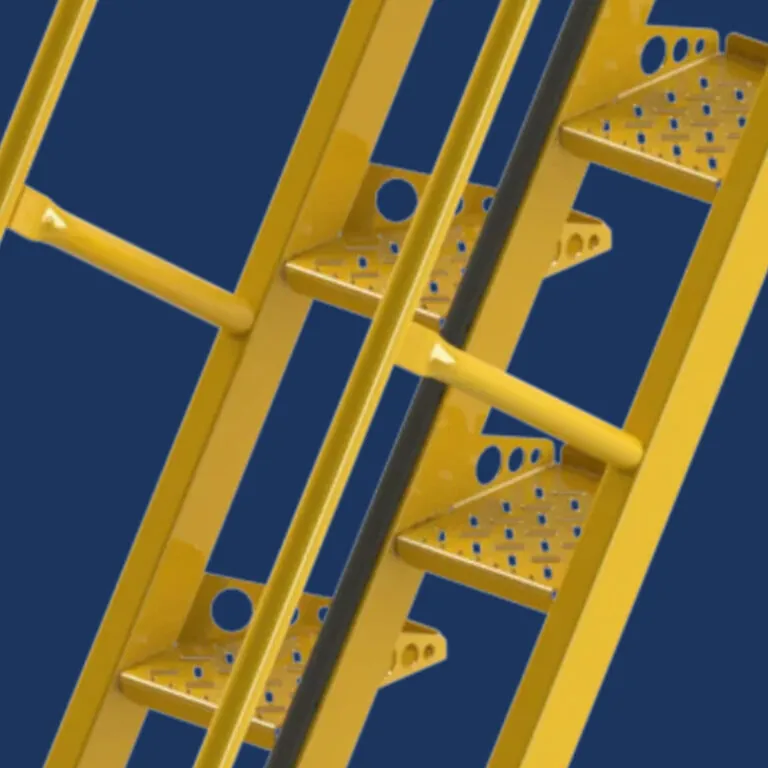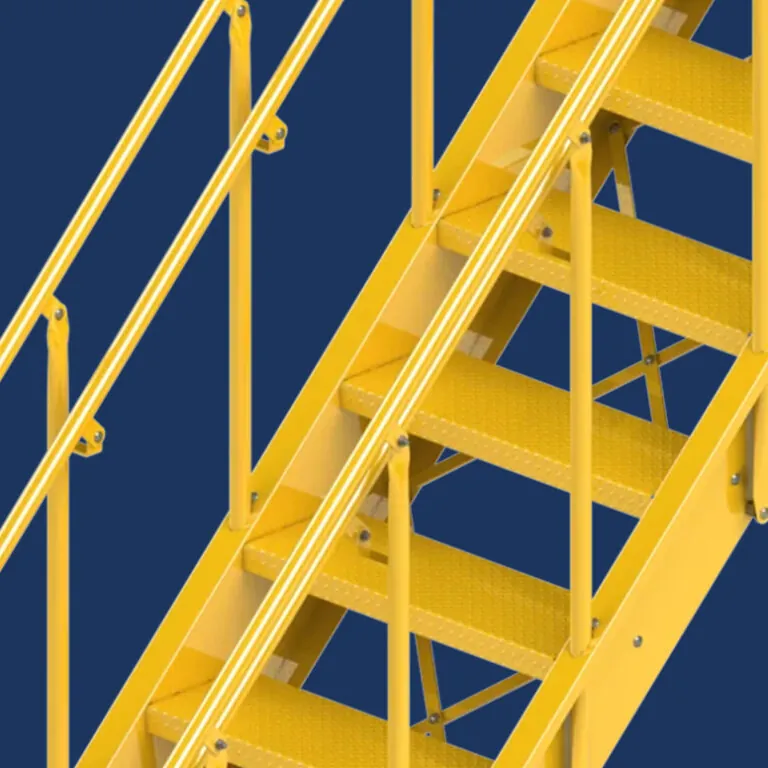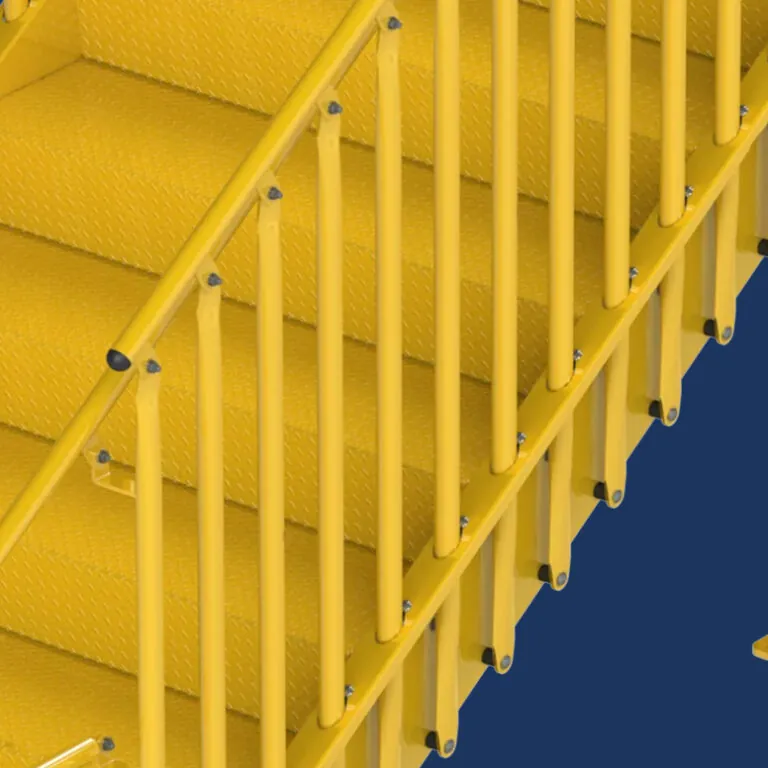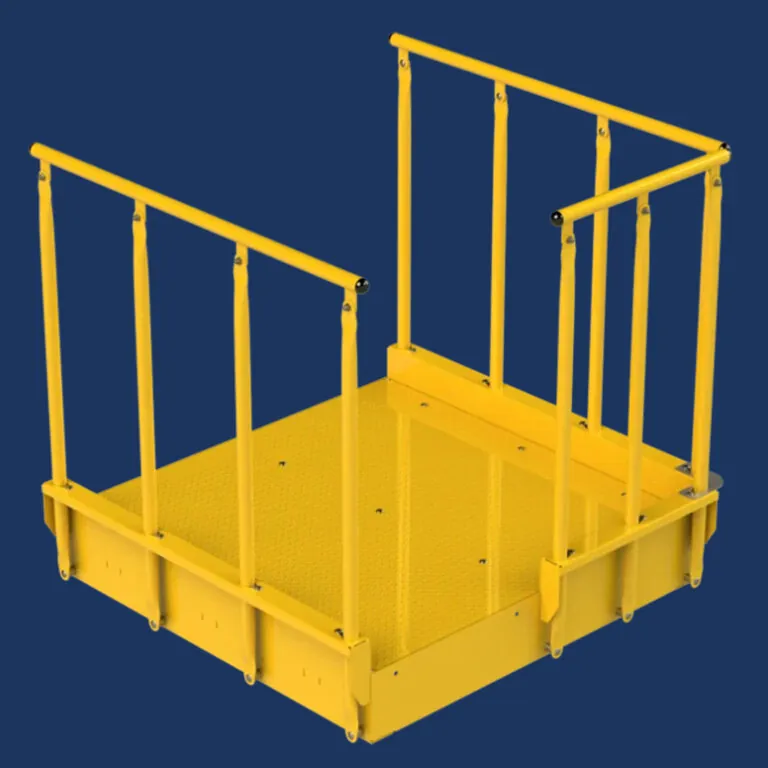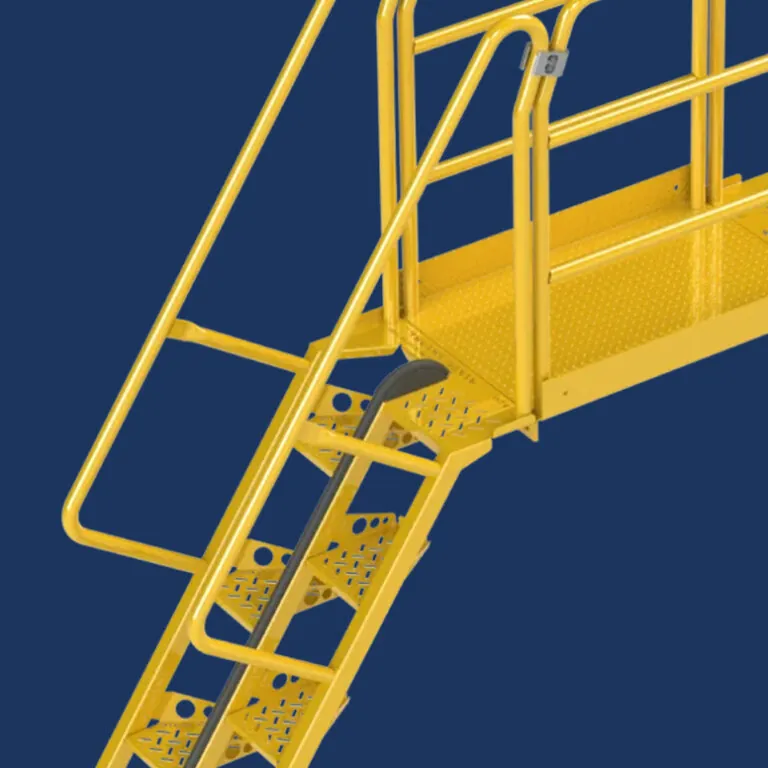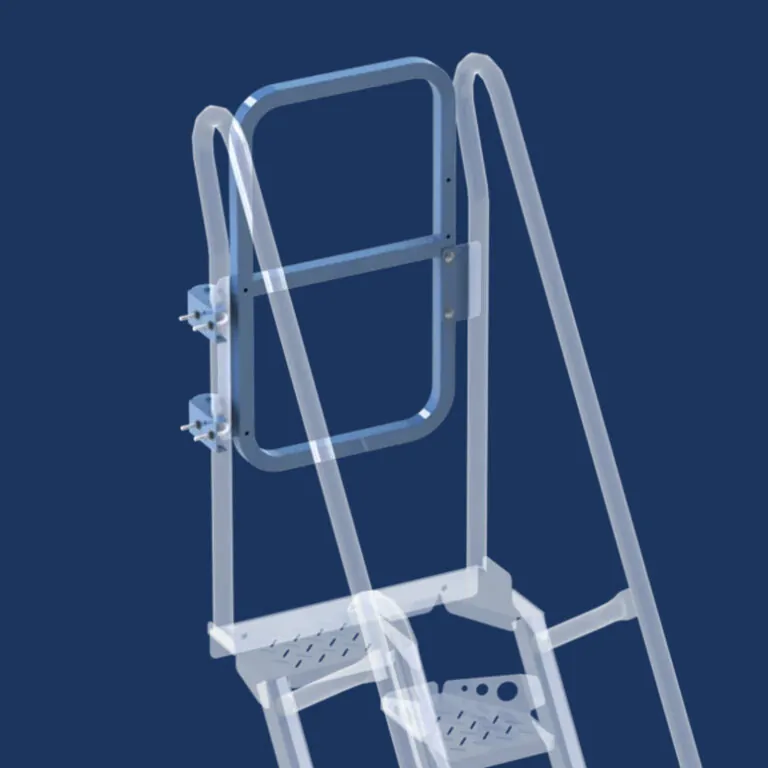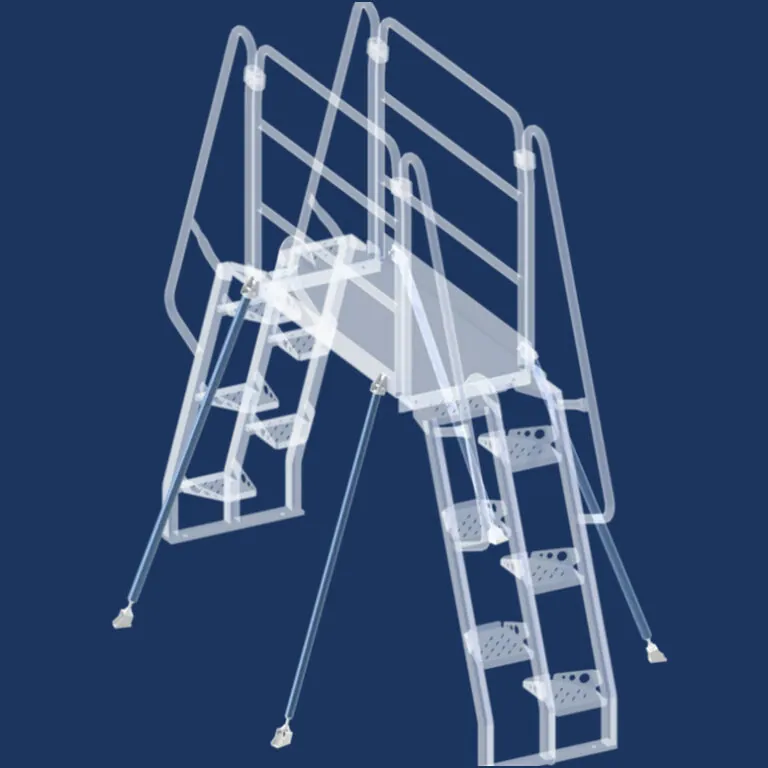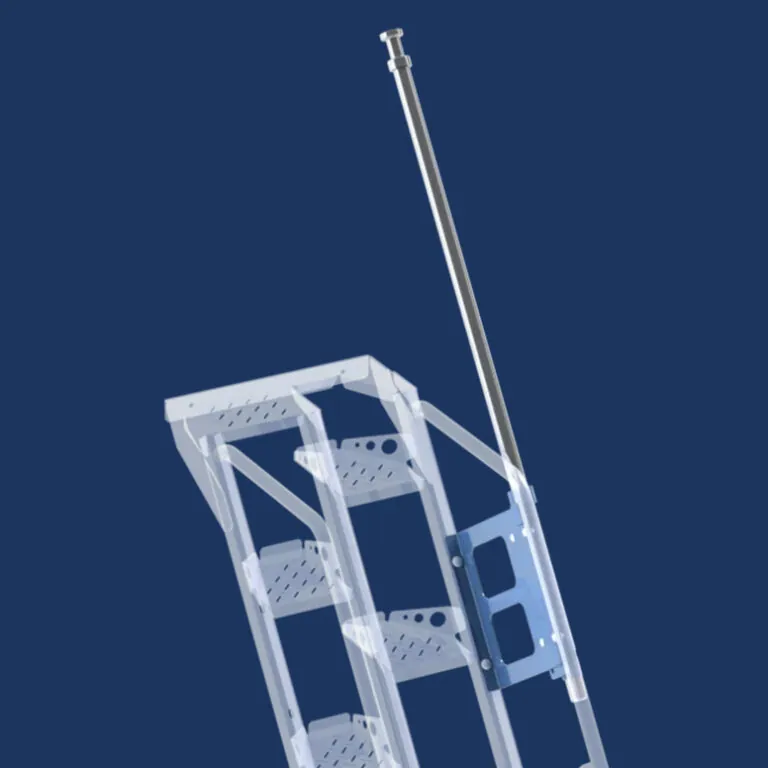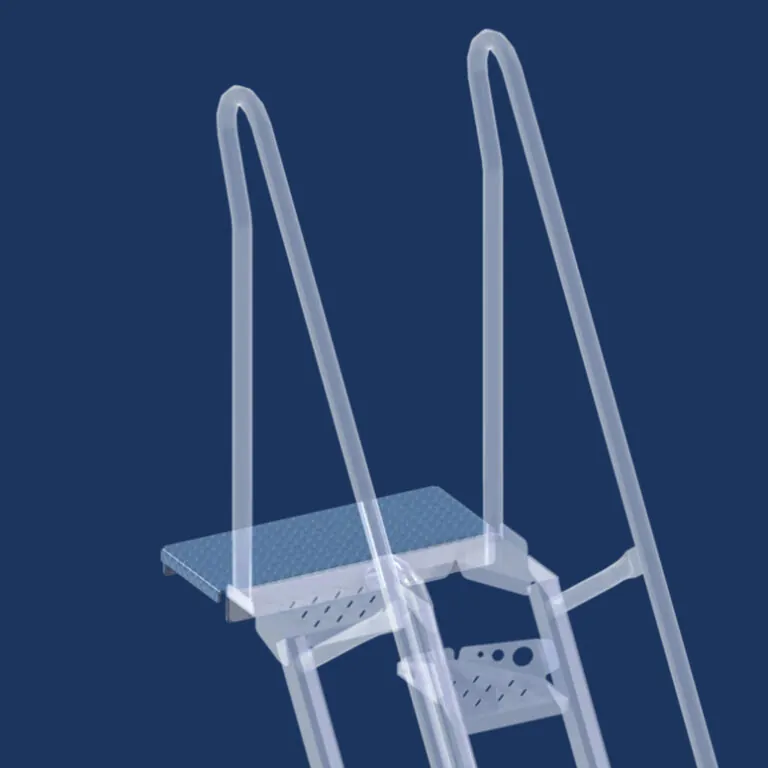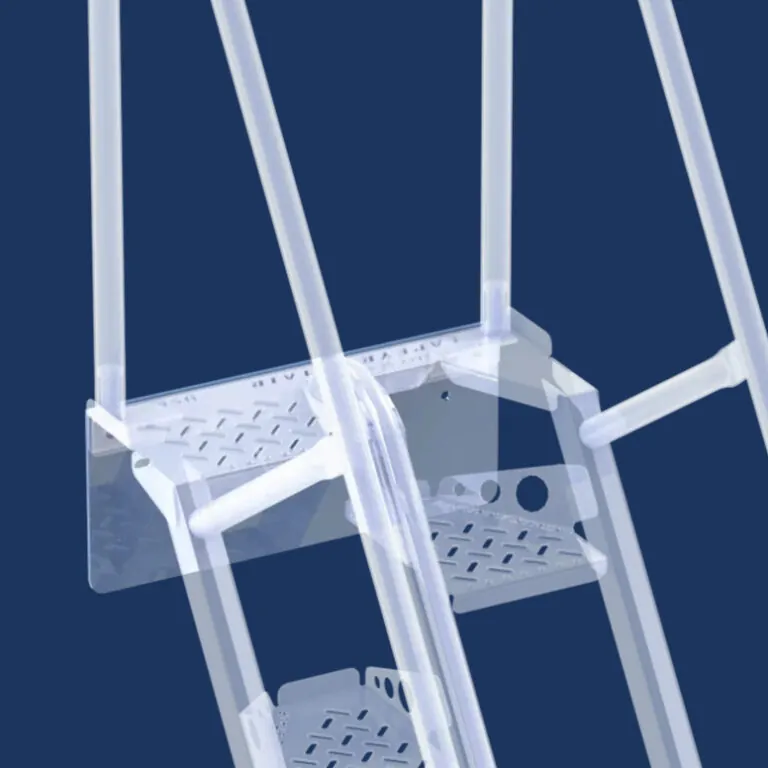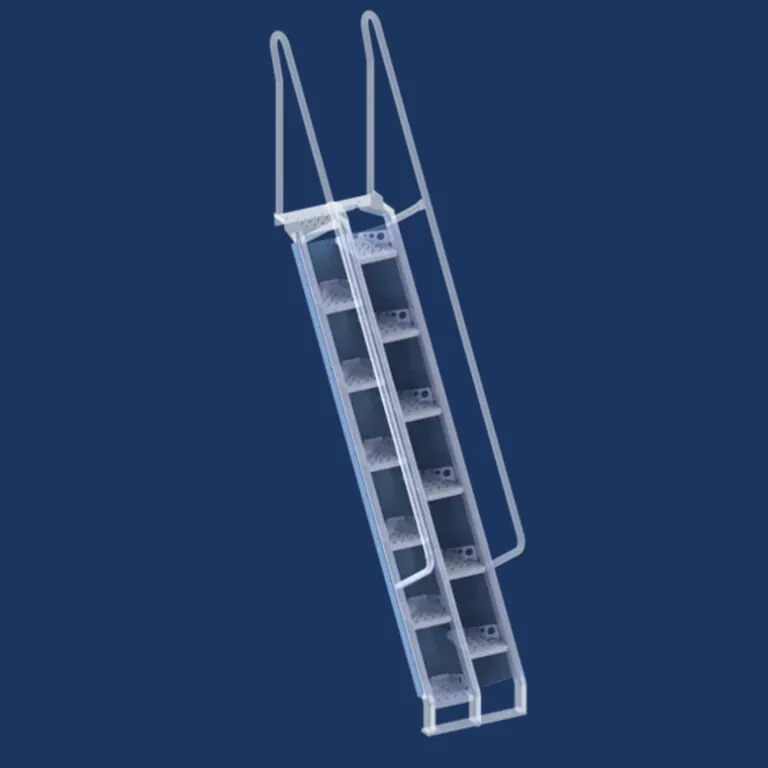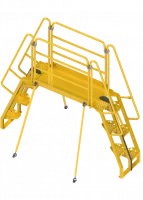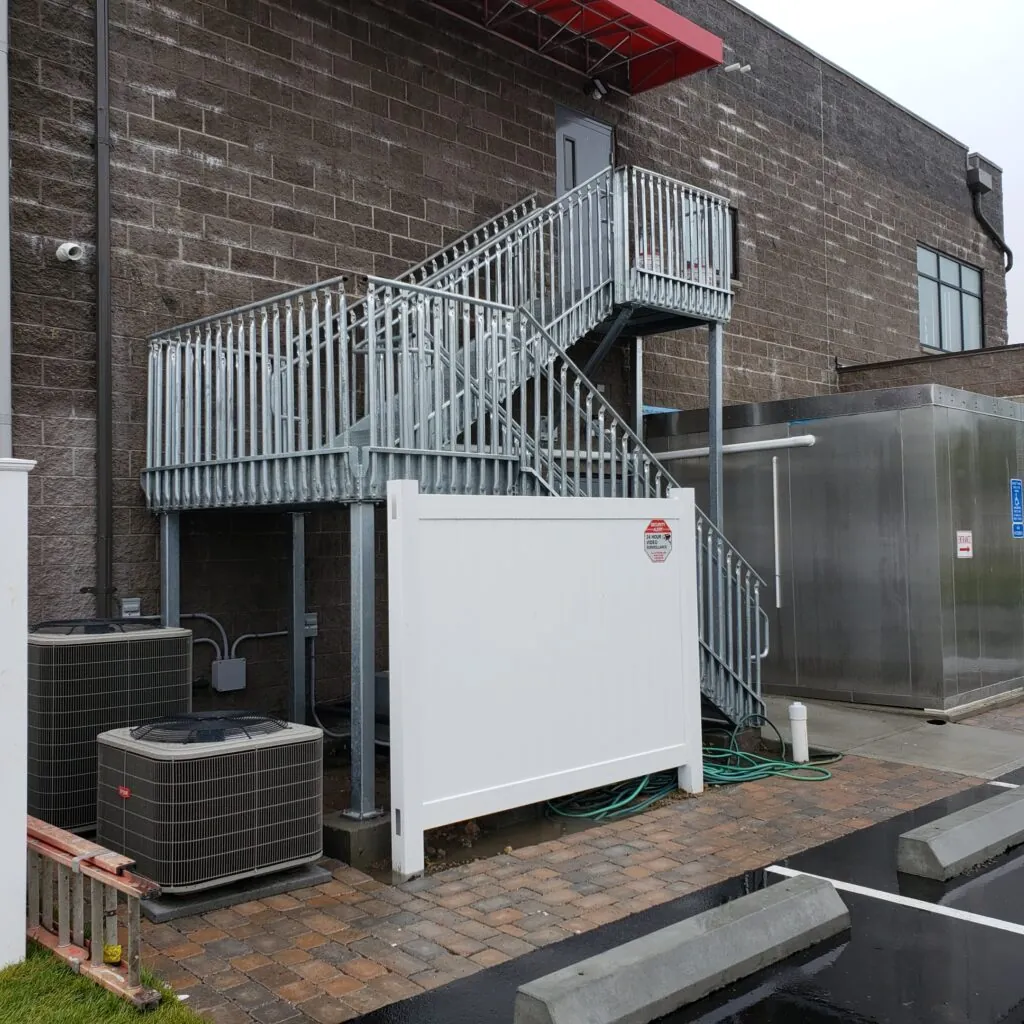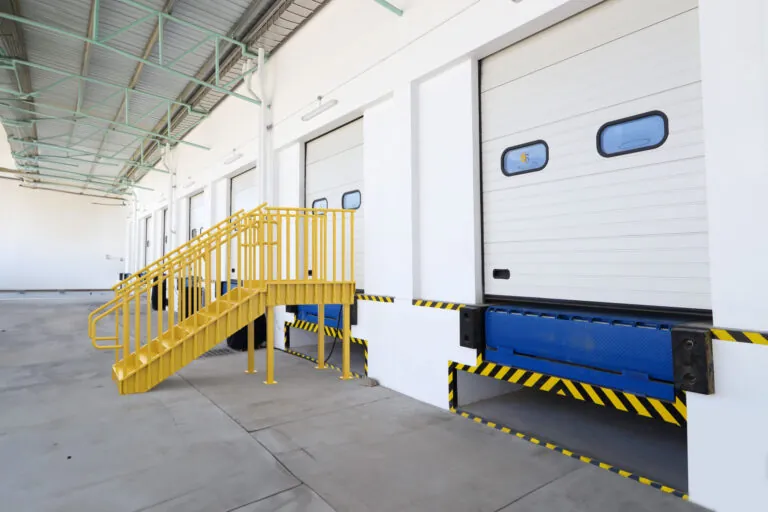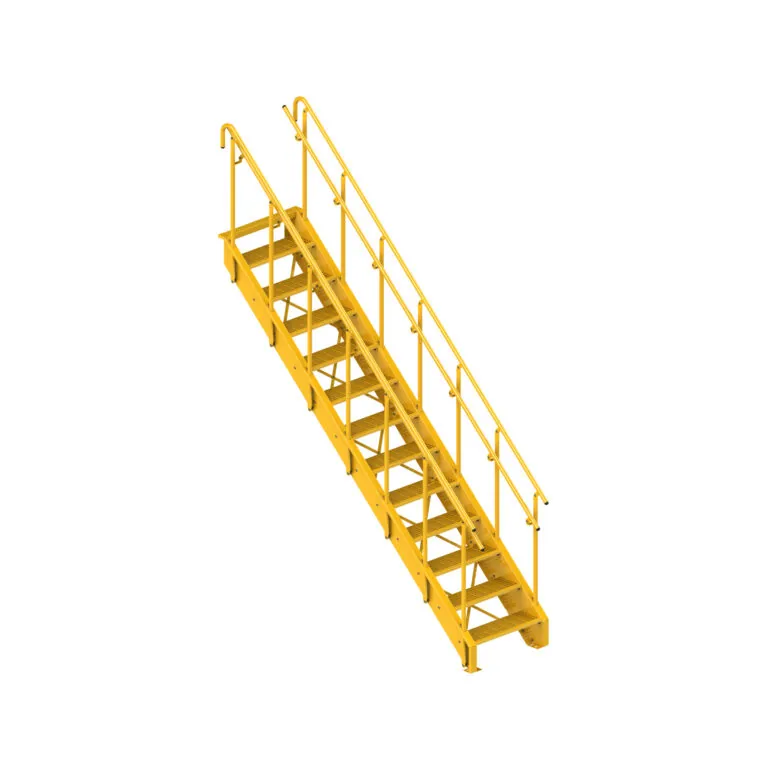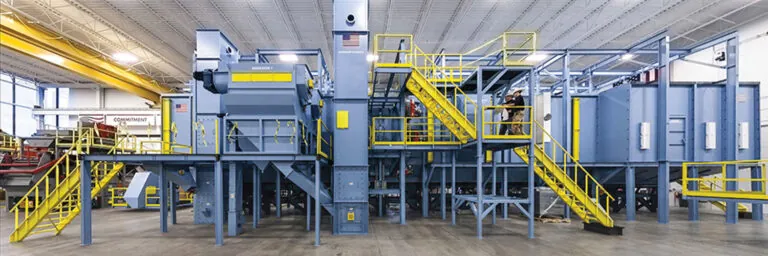Industrial stairs, commercial stairs, and even residential staircases can be made of steel. Reasons for utilizing steel include its strength and durability. However, the are several different types of steel such as carbon steel, galvanized steel, powder coated steel and stainless steel.
Each has slightly different properties and vary in aesthetic appeal.
This article will examine characteristics to take into account when comparing galvanized vs stainless steel including cost, durability, maintenance and finished look.
What is the difference between powder coated steel and galvanized steel?
The main difference between galvanized steel and powder coated steel is how each of these coatings protects the metal below. With galvanized steel, a zinc coating absorbs harmful materials before it reaches the surface below. Powder coating provides a protective resin layer that prevents damage to the metal surface below.
Looking at how each type of steel is made will help explain the difference.
 Galvanized steel is made by first thoroughly cleaning plain carbon steel and then dipping it into a bath of molten zinc. When the steel is immersed in the zinc, a metallurgic reaction happens between the iron in the steel and the molten zinc. This reaction forms a thin coating which bonds to the steel to prevent corrosive substances, like acid rain, from reaching the steel below. With hot-dip galvanizing, it only takes a few minutes to apply a full protective layer of zinc.
Galvanized steel is made by first thoroughly cleaning plain carbon steel and then dipping it into a bath of molten zinc. When the steel is immersed in the zinc, a metallurgic reaction happens between the iron in the steel and the molten zinc. This reaction forms a thin coating which bonds to the steel to prevent corrosive substances, like acid rain, from reaching the steel below. With hot-dip galvanizing, it only takes a few minutes to apply a full protective layer of zinc.
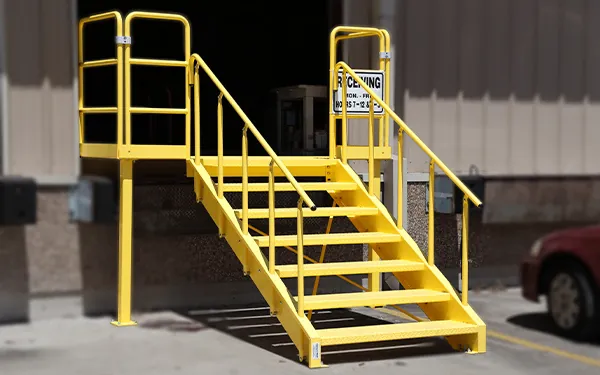 Powder coated steel is made by spraying the base carbon steel with a dry powder made of finely ground particles of pigment and resin. So that adhesion occurs, the pigment and resin are charged with static electricity and then sprayed onto steel that is electrically grounded. In the final step of the powder coating process, the powder coated metal is placed in a curing oven where is melted and then cooled into a thin, protective film which covers the steel.
Powder coated steel is made by spraying the base carbon steel with a dry powder made of finely ground particles of pigment and resin. So that adhesion occurs, the pigment and resin are charged with static electricity and then sprayed onto steel that is electrically grounded. In the final step of the powder coating process, the powder coated metal is placed in a curing oven where is melted and then cooled into a thin, protective film which covers the steel.
Powder coated vs galvanized steel comparison
| Comparison | Galvanized Steel | Powder Coated Steel | Winner |
| Pricing | More expensive initially | Less expensive initially | Powder coated |
| Durability | More durable | Durable | Galvanized |
| Environmental issues | Last over 100 years | Lasts15-20 years | Galvanized |
| Rust and corrosion | More resistant | Resistant | Galvanized |
| Finishes and textures | Wide range of colors and textures | Matte gray | Powder coated |
| Care and maintenance | Maintenance free | Easy | Galvanized |
1. Powder coated steel vs galvanized steel pricing
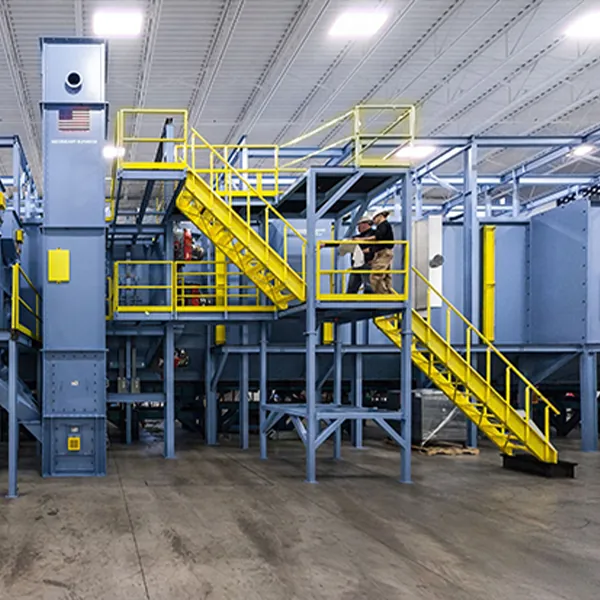 In order to understand the true price differences between powder coated and galvanized steel, one has to take into account both the initial costs and maintenance costs.
In order to understand the true price differences between powder coated and galvanized steel, one has to take into account both the initial costs and maintenance costs.
Galvanized steel has traditionally been considered to be more expensive in initial cost than powder coated steel. However, with process improvement in the last several decades and the relatively stable price of zinc, galvanized steel has become more price competitive. A staircase made of galvanized steel require no maintenance for up to century, eliminating future expenses.
While powder coating is initially less expensive to make than galvanized steel, the materials use in powder coatings have risen in price 100% or more in the last several years. Plus, a powder coated steel staircase requires more frequent maintenance, which can translate to a higher total cost over its lifetime.
Winner: Powder coated steel
2. Powder coated steel or galvanized steel for durability?
Both powder coated and galvanized steel staircases are extremely durable. That’s because the underlying base metal, steel, is the strongest material that can be used for staircase construction. Both powder coated and galvanized steel staircases can endure high traffic and heavy weight.
However, galvanized steel can be considered more durable as any dents or scratches won’t compromise its protective layer. Powder coating is porous and can be damaged under extreme force. Exposure to severe circumstances or heavy abrasion, can lead to chipping and cracking in the powder coating. This leaves the steel below exposed to the ill effects of the environment.
Winner: Galvanized steel
3. Powder coating vs galvanized steel for environmental issues
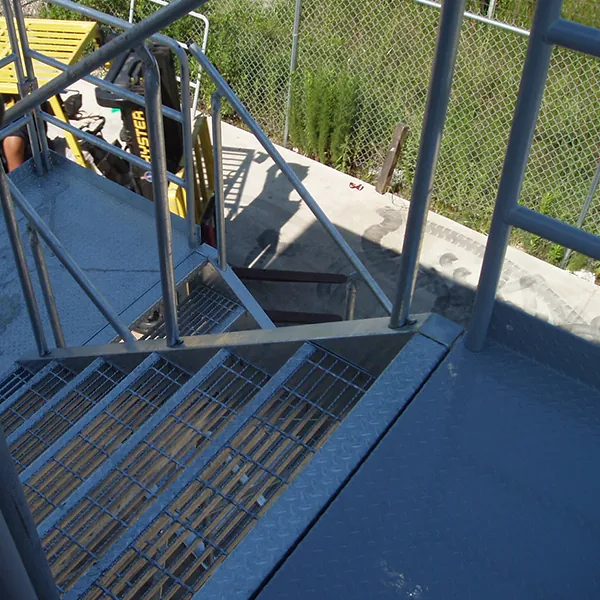 Both powder coated and galvanized steel are environmentally friendly and considered to be reusable raw materials. Both types of steel hold up well to all types of environmental conditions including extreme temperatures, as well exposure to sunlight, moisture, salt and other corrosive materials.
Both powder coated and galvanized steel are environmentally friendly and considered to be reusable raw materials. Both types of steel hold up well to all types of environmental conditions including extreme temperatures, as well exposure to sunlight, moisture, salt and other corrosive materials.
A staircase made of galvanized steel can last more than 100 years. According to the Galvanizers Association, galvanizing can provide up to 170 years of protection for steel. While durable, powder coating does not last as long as a galvanized surface. Powder coating typically lasts only 15-20 years, depending on the pre-treatment of the steel and materials used in the powder coating.
Winner: Galvanized steel
4. Powder coated steel or galvanized steel for rust and corrosion?
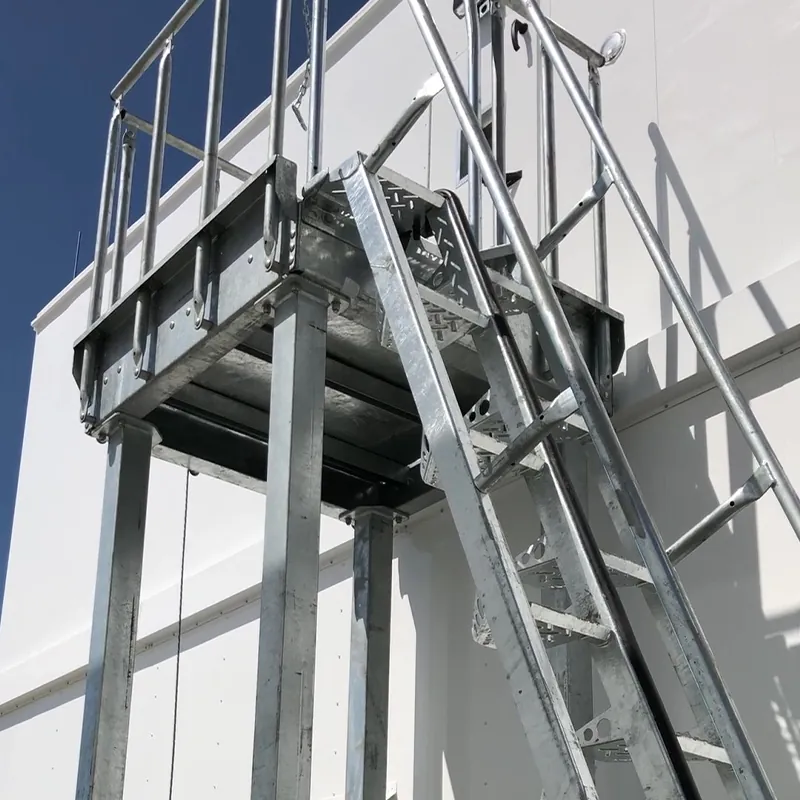 Both powder coated steel and galvanized steel provide corrosion protection. After all, that is the reason the steel was either galvanized or powder coated in the first place.
Both powder coated steel and galvanized steel provide corrosion protection. After all, that is the reason the steel was either galvanized or powder coated in the first place.
Galvanized steel’s corrosion resistance depends on the type and thickness of the protective zinc coating used in the galvanizing process. While it doesn’t last forever, galvanized steel is considered to be more corrosion resistant than powder coated steel, mainly due to its much longer life span. While the powder coated layer on steel will not rust or corrode, the steel underneath it can if the powder coating is cracked or damaged, especially in humid and moist environments. For this reason, galvanized steel is often the better choice for exterior steel stairs.
Winner: Galvanized
5. Powder coated steel vs galvanized steel finishes and textures
Powder coated steel provides a wide option of finishes and textures. Steel can be powder coated in almost any color to create a decorative finish. Powder coated steel stairs can be matched to the color scheme of the environment or to a company’s color scheme. Powder coated staircases can be colored brightly to stand out and attract attention, providing an additional safety feature. Powder coated staircases can be finished in a variety of textures including flat, matte, glossy and textured.
Galvanized steel is boring and does not offer the variety of color and texture options of powder coated steel. Galvanized steel can take on slightly different appearances immediately after the galvanization process due to the make up of the steel and cooling rates. However, over time all galvanized steel takes on a uniform matte gray appearance.
Winner: Powder coated steel
6. Powder coated steel or galvanized steel for care and maintenance?
While both galvanized steel and powder coated steel staircase are easy to care for and maintain, galvanized steel comes out on top. Galvanized steel staircases are self-maintaining and require virtually no care.
Powder coated metal staircases only need to be cleaned from time to time with a mild detergent and water. Harsh chemicals and solvents should be avoided so they don’t damage the powder coating.
Winner: Galvanized steel
Which is better galvanized steel or powder coated steel? Key takeaways
While galvanized steel might be initially more costly, it does offer many advantages over powder coated steel. It’s more durable, longer lasting and maintenance-free. Therefore, it might be the best choice for stairs in outdoor environments. However, galvanized steel lacks in the appearance department as it is a matte gray.
If appearance is a factor, then powder coated steel might be the way to go. Powder coated steel staircases can be painted in an almost endless variety of colors and finished with different textures. While not as long lasting as galvanized steel, powder coating still provides a durable, rust resistant finish which is easy to maintain.
For some applications, another consideration may be stainless steel stairs. While considerably more expensive than either galvanized or powder coated stairs, stainless steel offers the best of both worlds for corrosion resistance and appearance. Before deciding on stainless steel, consider the differences between powder coated vs stainless steel.
FAQs
Can you powder coat galvanized steel?
Yes, you can powder coat galvanized steel. Powder coating over galvanized steel can help to further improve rust and corrosion resistance and is usually done when the appearance is important. Powder coating galvanized steel can provide the best of both worlds – the highest durability with a pleasing look.
Does powder coating prevent rust?
Yes, powder coating prevents rust by providing a protective layer of film over the metal below. To improve rust prevention, prepare the metal surface to a white metal standard, apply a thick coating, and use a high durability epoxy primer powder coat with a polyester-based top coat.

